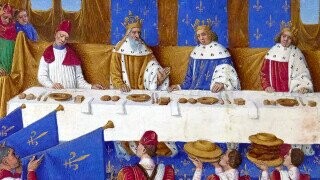10 Facts About Medieval Cuisine & Diet

The middle (aka dark) ages are possibly one of the most misrepresented times in European history. From Monty Python and the Holy Grail to Robinhood Men in Tights, the middle ages are commonly portrayed as a time of rampant ignorance, filth and general backwardness from which we've only gradually clawed our way out of.
The fact is that this time period was in fact more colorful, lively and nuanced than the grim, mud splattered depictions in Hollywood would have us believe.
Most people imagine middle age cuisine to consist mostly of gruel, slop and hastily slaughtered animals slowly rotating on spits (okay that last one was pretty common). From the use of ale and beer to round out caloric needs, to the invention of bread bowls, the period is chock full of delectable culinary facts.
We learn a lot of horror stories about the Middle Ages in Europe, but the food and dining aspects are often left out. Here are 10 facts about medieval diet and cuisine, in case you can't make it to a Medieval Times restaurant.
The Regimen Sanitatis Salernitanum

What modern society is missing is more poems praising eggs, wine, gravy, and rest.
Source: Atlas Obscura
Beer

Source: Slate
Bread Bowls

Source: British Library
Putting our lousy wedding cakes to shame

Source: British Library
Forks

Source: AP News
Stop scratching your bites during dinner

Source: British Library
You could be a professional spice-keeper

Source: British Library
They ate what now??

Source: BBC
Medieval Breakfast

Source: Smithsonian
Cooked Veggies Only

Source: British Library